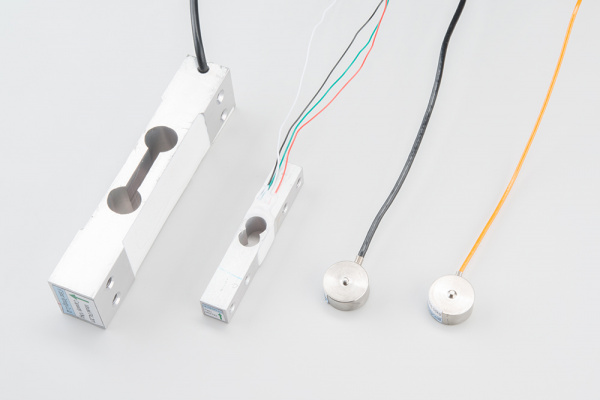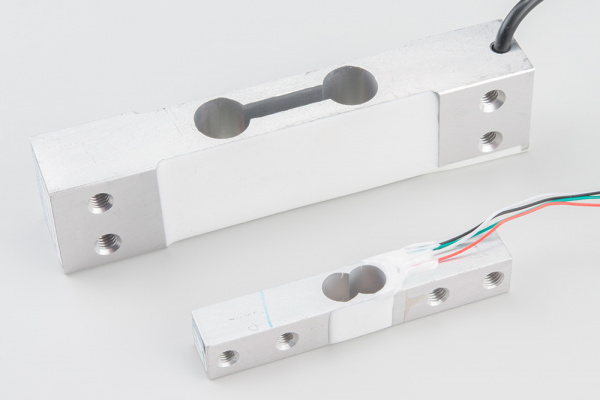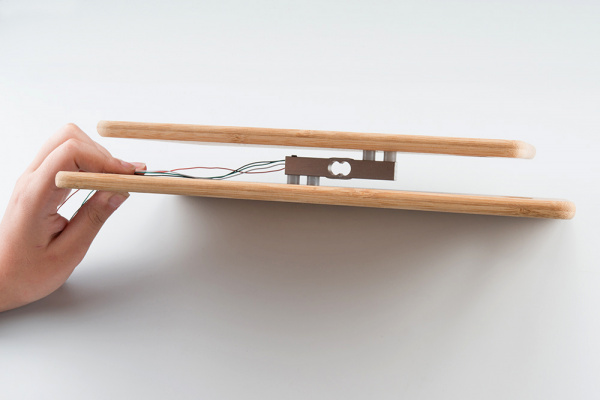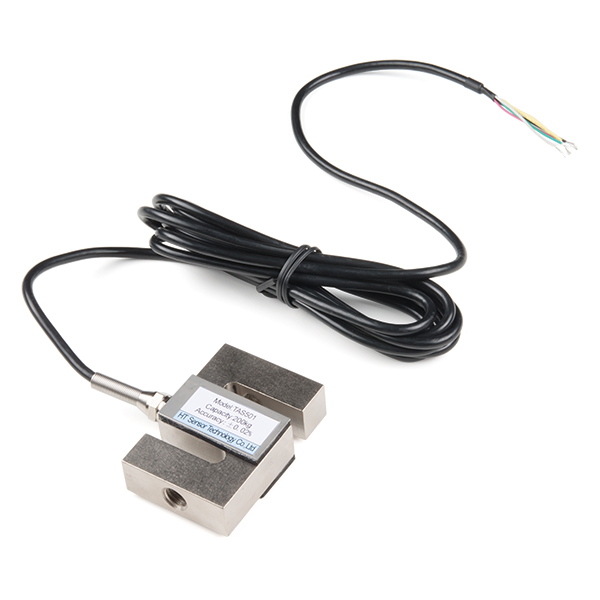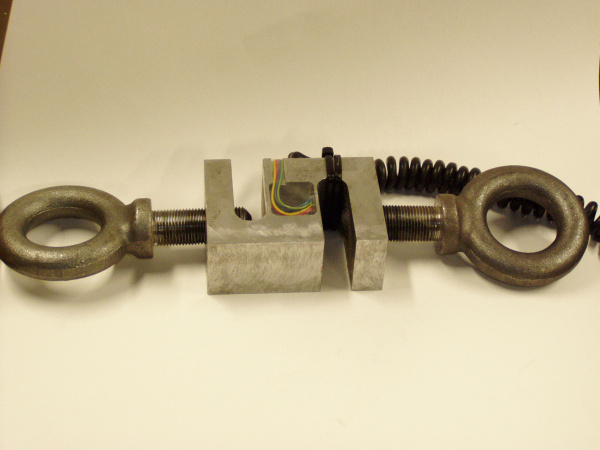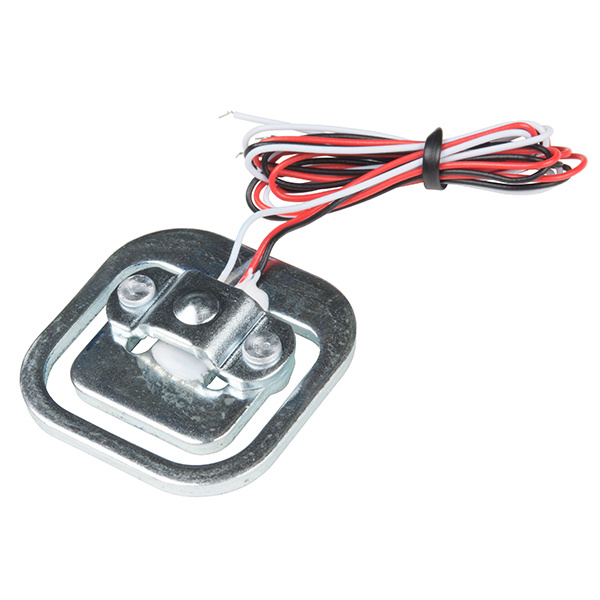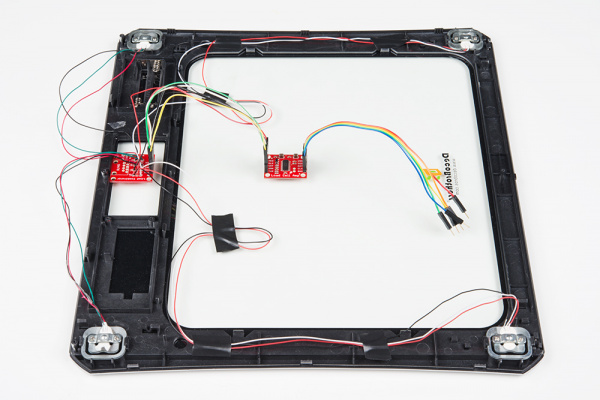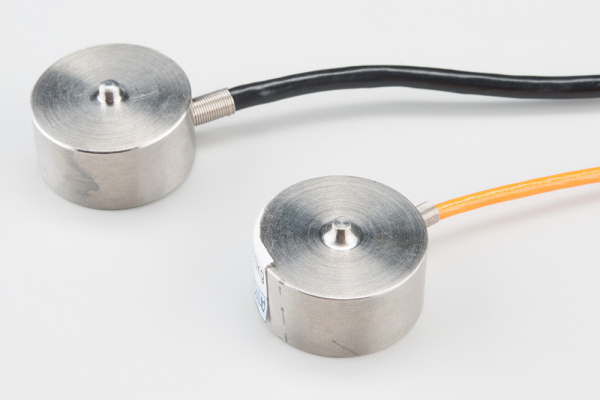Load Cell Amplifier HX711 Breakout Hookup Guide
Load Cell Setup
Depending on the type of load cell you are using, the configuration of how it should be hooked up to plates or surfaces will change. We'll list a few different types of setups below.
Bar-Type Load Cell
Usually with larger, non-push button bar load cells you will want to hook up the load cell between two plates in a "Z" shape.
As shown below, the bar-type load cell is mounted with fitting screws and spacers so that the strain can be correctly measured. Note that only one side of the load cell is screwed into each board when a bar-type load cell is placed between two plates. This provides a moment of force, or torque, on the strain gauge rather than just compression force, which is easier to measure and much more accurate.
S-Type Load Cell
S-type load cells can measure compression, tension, or both due to its design.
Besides placing the load cell between plates, the s-type can be used to measure suspended tanks or hoppers. You can think of this as a load attached to a crane. Below is an s-type load cell with two threaded, rod end bearings.
Single, Strain Gauge Load Cells (i.e. Load Sensors)
For single, strain gauge load cells, they can be placed at equal distances with respect to each other underneath a platform.
The image below shows four, single strain gauge (i.e. the load sensor) arranged in a wheatstone bridge configuration. This configuration is also possible with four button-type load cells.
Button/Disk-Type Load Cells
For smaller, push-button or disc load cells, you will want to make sure to screw in the disc to a bottom plate (or surface you are measuring force against), and center the beam, plate, or whatever else you are wishing to measure the force of onto the "button" on the top.
Usually another plate with a hole is used to make sure whatever you are measuring is hitting the same spot on the load cell each time, but it is not necessary. Below are images of four button-type load cells placed at equal distances with respect to each other under a platform. Make sure to read the datasheet for the load cell you are using and get the correct screws to fit into it.
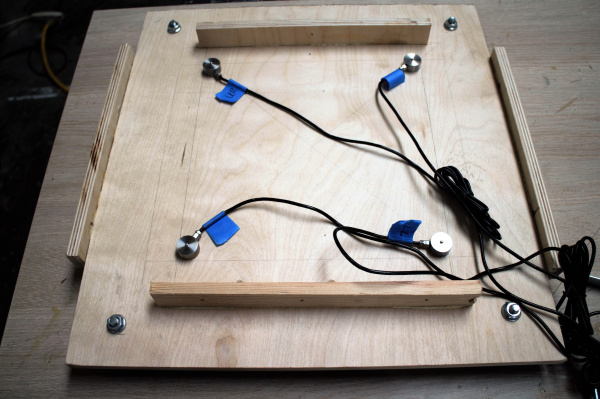 |
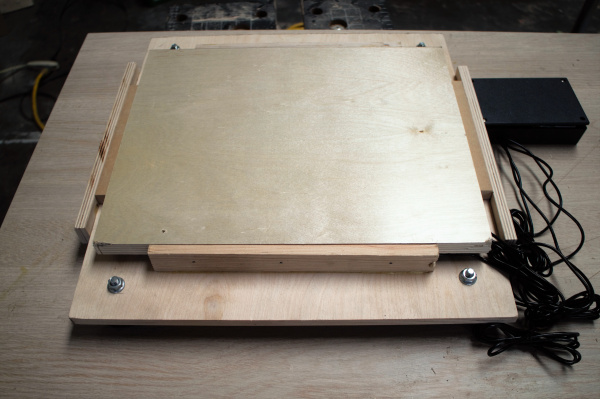 |
| Push Button Load Cells from the IoT Industrial Scale tutorial | Push Button Load Cells Inside a Custom Built Scale |
Variances in Measurements
Load cell measurements can be off by +/- 5% due to a range of things including temperature, creep, vibration, drift, and other electrical and mechanical interferences. Before you install your scale, take a moment and design your system to allow for easy calibration or be able to adjust the code parameters to account for these variations.
